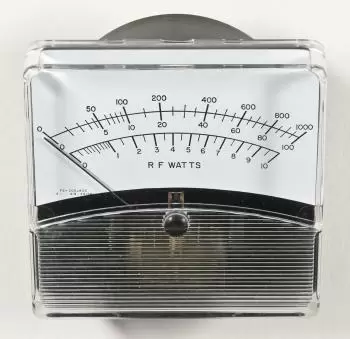
Kilowatts, abbreviated as kW, are an essential unit of measurement in the world of electricity. They represent electrical power, which is the rate at which electrical work is done or energy is consumed.
For example, a 60- watt light bulb consumes 0.06 kilowatts per hour. An average home uses 30 kilowatts per day. This is equivalent to about 900 kilowatts per month, which represents the typical electricity consumption of a home. Finally, a 5 kW photovoltaic system can generate approximately 6,000 kilowatt-hours of electricity per year.
Definition of kilowatt
A kilowatt is a unit of power equivalent to 1,000 watts . The watt, represented as "W", is the base unit for power in the International System of Units (SI). Therefore, 1 kilowatt (1 kW) is equal to 1,000 watts (1,000 W).
To put it in perspective, a typical 100- watt incandescent light bulb consumes 0.1 kilowatts of electrical energy per hour. Kilowatts are a convenient way to express power, especially when it comes to larger, more complex electrical applications.
Relationship with other electrical units
To fully understand kilowatts, it is helpful to know the relationship between the most common electrical units:
-
Watts (W): The watt is the SI base unit of power. One watt is equal to one joule per second, which means it represents the rate of change of energy.
-
Megawatts (MW): One megawatt is equal to 1,000 kilowatts or 1,000,000 watts . It is used to describe power in larger applications, such as electricity generation in power plants.
-
Gigawatts (GW): One gigawatt is equal to 1,000 megawatts or 1,000,000,000 watts . This is a unit of measurement used to describe generation capacity on an even larger scale, such as electricity production at the country level.
Kilowatts (kW) are units of electrical power. In general, kilowatts and their multiples (megawatts, gigawatts, etc.) are commonly used to measure electrical power in applications ranging from the consumption of electrical devices in homes to the generating capacity of large-scale power plants.
To measure other powers, such as mechanical power, thermal power, or any other form of power, specific units related to the type of energy or work in question are used. For example, mechanical power is measured in watts (W) or horsepower (HP), thermal power is measured in watts (W) or BTU per hour (BTU/h), and so on.
Uses of kilowatts in everyday life
Kilowatts have a wide variety of applications in everyday life. Some examples include:
-
Homes: Electric meters in homes record the number of kilowatt-hours (kWh) consumed, which translates into the amount of electricity used and billed. Appliances, heating systems, lighting and other electrical devices are rated in kilowatts to determine their energy consumption.
-
Electric Transportation: Electric vehicles (EVs) are evaluated in terms of their power in kilowatts. For example, an EV with a 100 kW motor has a power equivalent to 134 horsepower.
-
Industry: Companies and factories use kilowatts to measure the power required by their machinery and production processes.
-
Solar and wind energy: Renewable energy generation systems, such as solar panels and wind turbines, are rated in kilowatts to determine their energy production capacity.
-
HVAC: Heating, ventilation and air conditioning (HVAC) systems in buildings are sized in kilowatts to ensure temperature regulation and energy efficiency.
Examples of consumption in kilowatts
Below is a table with some examples of typical consumption in kilowatts (kW) for different devices and applications:
|
Device/Application |
Consumption in Kilowatts (kW) |
|
Incandescent bulb (60W) |
0.060 kW |
|
Laptop |
0.050 kW (50 watts ) |
|
LED TV (42 inches) |
0.100 kW (100 watts ) |
|
Electric oven |
2,000 kW (2000 watts ) |
|
Fridge |
0.150 kW (150 watts ) |
|
Central air conditioner) |
3,500 kW (3,500 watts ) |
|
Washing machine |
0,500 kW (500 watts ) |
|
Microwave |
1,000 kW (1000 watts ) |
|
electric car charger |
7,000 kW (7000 watts ) |
Electrical production in photovoltaic installations
Photovoltaic installations vary in size and energy production capacity, which is expressed in kilowatts (kW) or megawatts (MW).
A typical residential solar array has a capacity of around 3 to 10 kW, which can generate 3,000 to 10,000 kWh of electricity per year, enough to power the average home. Commercial installations are typically larger and can range from 10 kW to several hundred kW, generating tens of thousands of kWh annually.
On the other hand, large-scale solar plants, such as desert solar installations, can have capacities of several MW or even GW, generating millions or billions of kWh of electricity annually.
Difference between kilowatts and kilowatt-hours
It is common to confuse power with energy. Power refers to the rate of energy consumption or generation, measured in watts . One watt equals one joule per second.
For example, if a 0.6 kilowatt light bulb stays on for one hour, it will have consumed 0.6 kilowatt-hours (kWh), which is equivalent to 360,000 joules (J). This same amount of energy could light a 0.3 kilowatt light bulb for 2 hours.